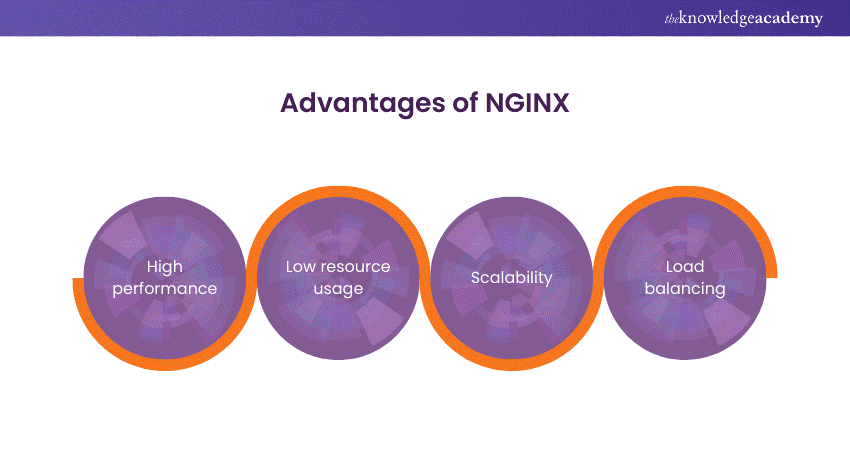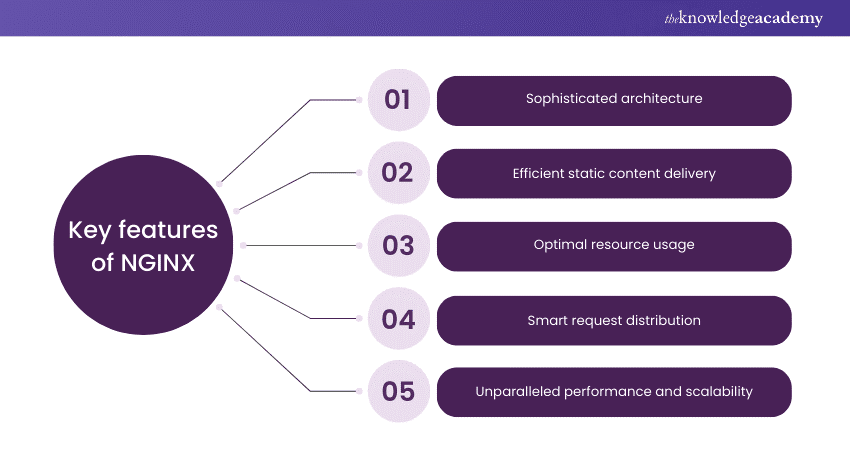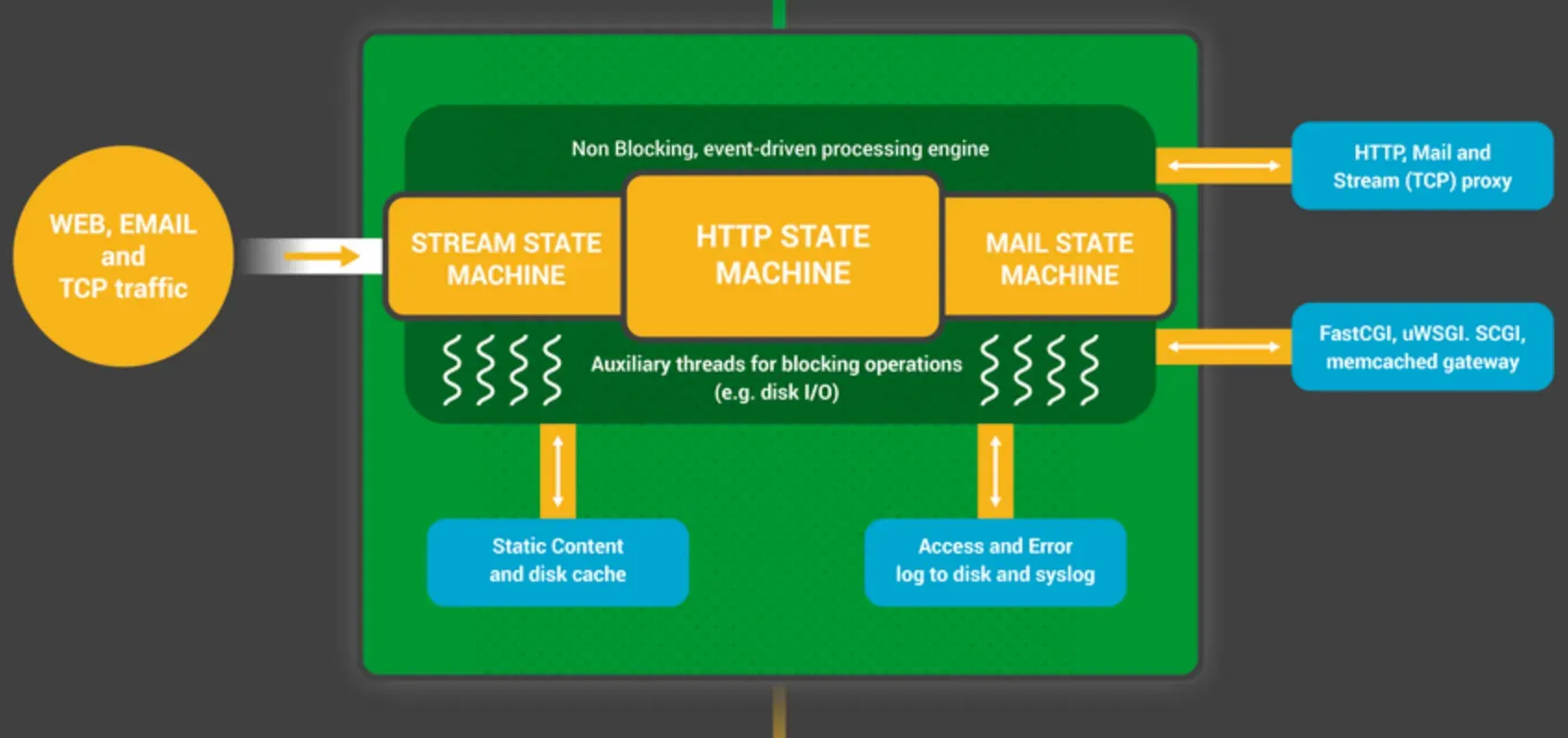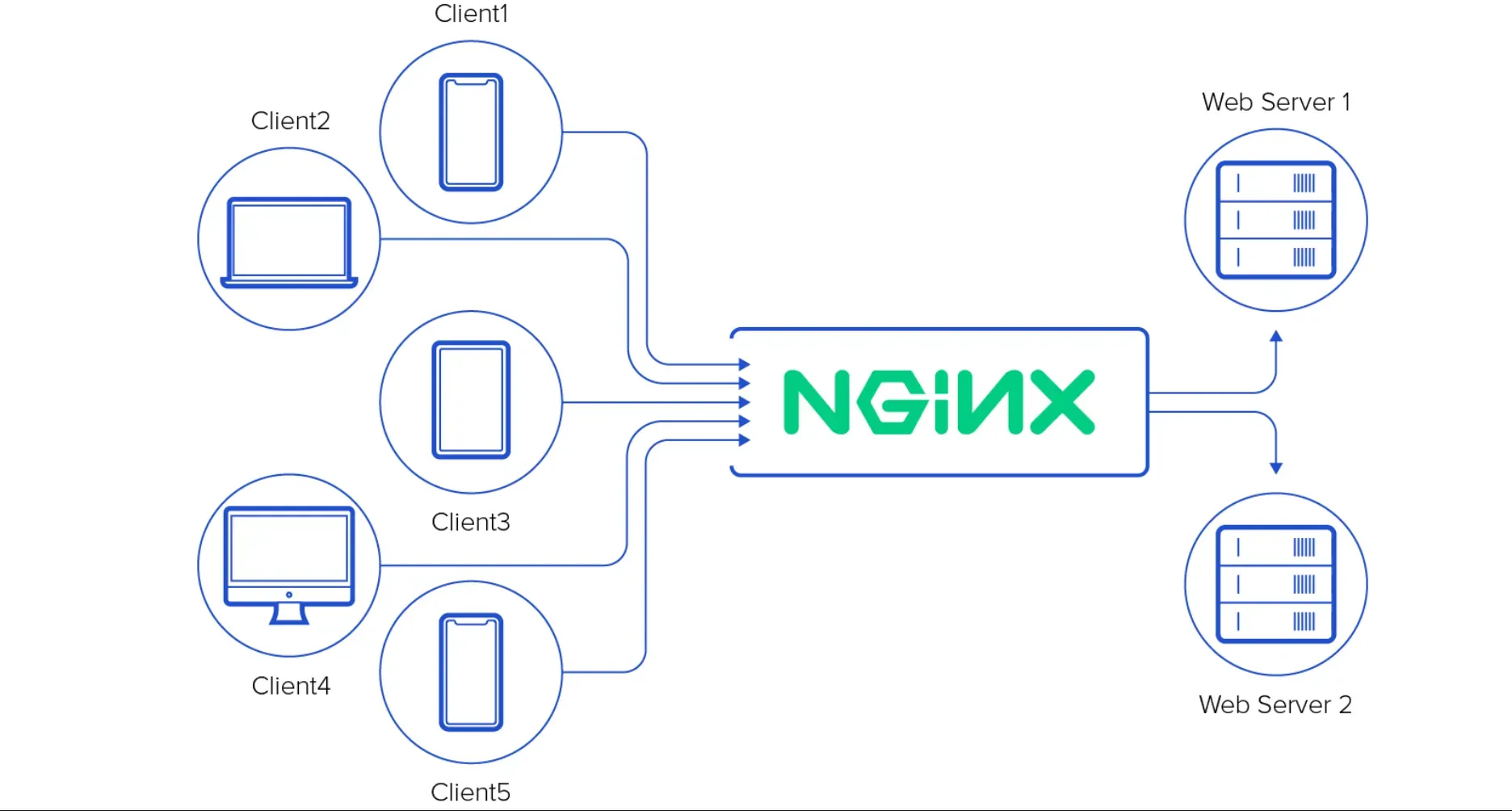What is NGINX?
NGINX is a robust, open-source software used for web serving, reverse proxying, caching, load balancing, and media streaming. It aims to handle high traffic with low memory usage.
NGINX was created by Igor Sysoev and first publicly released in 2004. It was designed to solve the C10k problem, which is handling 10,000 simultaneous connections efficiently.
It is extremely efficient at serving static and dynamic HTTP content. It can engineer server responses and serve multiple clients concurrently without degrading performance. NGINX is becoming increasingly popular among servers, as it is known for its high performance, stability, rich feature set, simple configuration, and low resource consumption.
Suppose you have a high-traffic website receiving thousands of requests per minute. Using Apache, you might experience problems with high memory usage and slow performance. In contrast, NGINX can handle the same number of connections but with significantly lower memory usage and more efficient performance.
NGINX vs. Apache: C10K Problem

Apache is a process-based server, which means it creates a new process or thread for each incoming connection. As the number of connections increases, the server runs out of resources to process these connections, leading to the C10K problem.
NGINX, on the other hand, uses an asynchronous, event-driven approach, which allows it to handle multiple connections within a single worker process, making it more efficient at serving a high number of concurrent connections.
Why NGINX?
NGINX ensures enhanced performance and stability. It handles many simultaneous connections with much lesser memory usage, making it suitable for high-traffic websites.
Suppose you have three application servers handling the same application. You can configure NGINX to distribute incoming traffic evenly among these servers using a round-robin algorithm or based on the least number of active connections.
This way, you can ensure the load on each server is balanced, preventing any single server from becoming a bottleneck.

Configuration Simplicity and Flexibility
NGINX uses a simple, flexible, and readable configuration format. This aids easy customization of server settings to meet different needs, making handling server configurations a breeze.
You can split and organize configuration files into smaller parts by using 'include' directives, which helps maintain the configuration clean and easy to understand.
NGINX supports variables, conditionals, control structures, and other directives, allowing you to create complex routing rules and custom configurations.
Scalable and High Availability
NGINX can efficiently handle a sudden increase in traffic and ensure high availability. This makes it an ideal choice for businesses striving for zero downtime.
Using the "proxy_cache" directive, NGINX can act as a caching reverse proxy, reducing response times and offloading traffic from your backend servers during traffic spikes.
By implementing HTTP/2, gzip compression, and rate limiting, you can further optimize the performance of your applications, improving scalability and user experience.
Handling Static and Dynamic Content
One of NGINX's unique strengths includes its ability to efficiently serve static content, reducing the load on application servers. However, it can also serve dynamic content when appropriately configured.

When to Use NGINX?
Load balancing is a key feature of NGINX. It can distribute network traffic across several servers to ensure no single server is overwhelmed.
When Serving Static Content
For websites or applications with many static assets like images, CSS, and JavaScript, using NGINX as a reverse proxy can significantly improve performance and efficiency.
For SSL Termination
NGINX can handle the task of SSL termination and decrypt requests from clients before sending them to your application servers, freeing the latter from performing these compute-intensive operations.
When Seeking Scalability
NGINX is an excellent choice when your application needs to be scalable. With NGINX, your server infrastructure can be set to grow in response to the demand easily.
Where Can NGINX Be Implemented?
In corporate settings, NGINX performs as a very efficient HTTP load balancer to distribute traffic to several application servers for better reliability and speed.

NGINX in Data Centers
Data Centers often use NGINX for its high performance and low memory usage. It efficiently serves multiple concurrent requests in high-traffic servers.
NGINX in IoT Devices
NGINX suits IoT devices for their lightweight nature and ability to handle high concurrent connections with minimal resources, which is a common requirement in IoT scenarios.
NGINX in Content Streaming Platforms
Many media and content streaming platforms rely on NGINX due to its efficient media streaming server capabilities, which ensure smooth delivery of content to end-users.
How to Use NGINX?
Transitioning to NGINX starts with its installation. It's available in the repository of most Linux distributions, and the installation process is straightforward.

Configuration of NGINX
After NGINX has been installed, the next step is its configuration. The configuration files reside at /etc/nginx. The main configuration file is /etc/nginx/nginx.conf.
Testing NGINX Setup
Once the configuration is done, the setup should be tested. This can be done by starting and stopping the NGINX server. The status command shows whether NGINX is running or not.
Routing Traffic with NGINX
You can use NGINX to route traffic by setting up server blocks. These contain the routing information about the applications running on your server. Configure them right, and your applications will know where to send their traffic.
Frequently Asked Questions (FAQs)
What is NGINX How does NGINX work?
Nginx (pronounced "engine-x") is a free, open-source web server and reverse proxy.
It efficiently handles high traffic websites and applications.
Nginx is known for its speed, stability, and scalability
NGINX operates as an HTTP and reverse proxy server, a mail proxy server, and a generic TCP/UDP proxy server. It uses an asynchronous, event-driven approach to handle requests which contributes to its efficiency.
Why use NGINX instead of Apache?
NGINX is noted for its high performance, especially in serving static content and balancing load amongst application servers, points where it can surpass Apache. However, the choice depends on the specific use-case.
What are the core features of NGINX?
Core features of NGINX include HTTP and TCP/UDP reverse proxying, HTTP load balancing, serving static content, handling of index files and auto-indexing, SSL termination, and more.
Can NGINX be used as an application server?
While NGINX is typically used as a web server or reverse proxy, it can also be used as an application server for JavaScript apps by using the NGINX Unit feature.
Is NGINX better than Apache for all uses?
While NGINX might excel in some cases, Apache could be a better choice in others. Consider factors such as the application, expected traffic, and server resources when choosing between NGINX and Apache.

